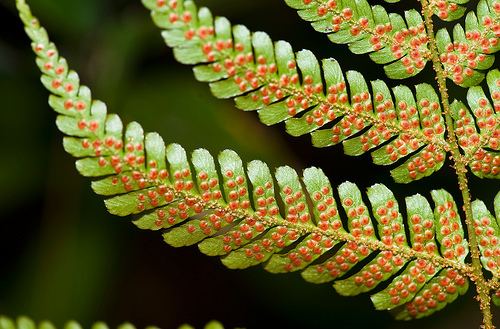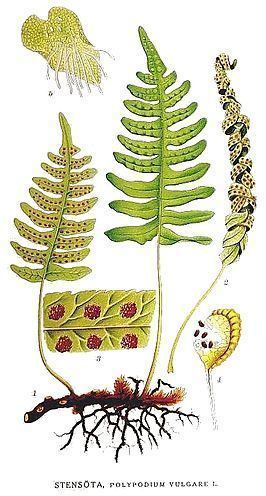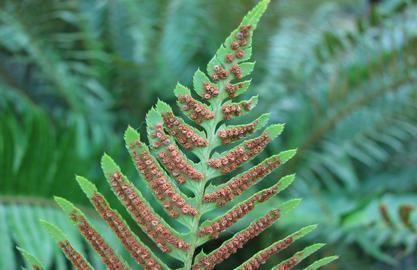Scientific name Polypodiopsida Rank Class | Division Pteridophyta Higher classification Vascular plant | |
 | ||
Lower classifications Polypodiales, Tree ferns, Water ferns, Ophioglossales, Mosquito ferns | ||
Difference between eusporangiate and leptosporangiate ferns
Leptosporangiate ferns are the largest group of living ferns, including some 11000 species worldwide. They constitute the subclass Polypodiidae, but are often considered to be the class Pteridopsida or Polypodiopsida, although other classifications assign them a different rank. The leptosporangiate ferns are one of the four major groups of ferns, with the other three being the eusporangiate ferns comprising the marattioid ferns (Marattiidae, Marattiaceae), the horsetails (Equisetiidae, Equisetaceae), and whisk ferns and moonworts.
Contents
- Difference between eusporangiate and leptosporangiate ferns
- Leptosporangiate fern life cycle
- Classification
- Phylogenic relationships
- Discussion of Molecular Classification
- References

There are approximately 8465 species of living leptosporangiate ferns, compared with about 2070 for all other ferns, totalling 10535 species of ferns. Almost a third of leptosporangiate fern species are epiphytes.

These ferns are called leptosporangiate because their sporangia arise from a single epidermal cell and not from a group of cells as in eusporangiate ferns (a polyphyletic lineage). The sporangia are typically covered with a scale called the indusium, which can cover the whole sorus, forming a ring or cup around the sorus, or can also be strongly reduced to completely absent. Many leptosporangiate ferns have an annulus around the sporangium, which ejects the spores.

Leptosporangiate fern life cycle
Classification
Leptosporangiates include the vast majority of extant ferns. Only groups that branched off early from the fern lineage, which retain a eusporangium, are not included. Multiple attempts have been made to classify ferns. The classification scheme proposed by Smith et al. 2006 is the most widely accepted. More recent analyses by and Christenhusz et al. 2011 and Christenhusz & Chase 2014 offer additional insight into the group.
Phylogenic relationships
The following phylogram shows a likely relationship between the other vascular plant classes and the leptosporangiate ferns. It was formerly unclear about the relationship between Equisetopsida, Psilotopsida, and Marattiopsida, but recent studies have shown that Equisetopsida is most likely sister to Psilotopsida.
Discussion of Molecular Classification
There has been some challenge to recent molecular studies, claiming that these provide a skewed view of the phylogenetic order because they do not take into account fossil representatives. However, the molecular studies have clarified relations among families that had already been thought to be polyphyletic before the advent of molecular information but that were left in their polyphyletic ranks because there was not enough information to do otherwise. The classification of ferns using these molecular studies, which have generally supported one another, reflects the best information available at present, because traditional morphological characters are not always informative in elucidating evolutionary relationships among ferns
